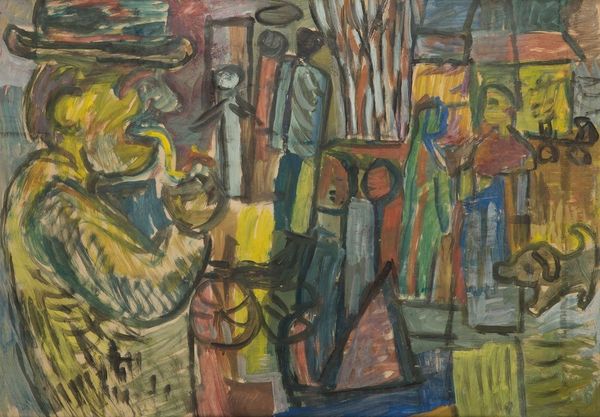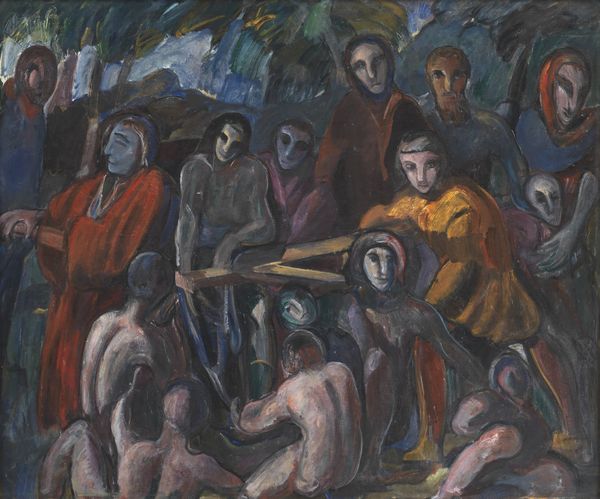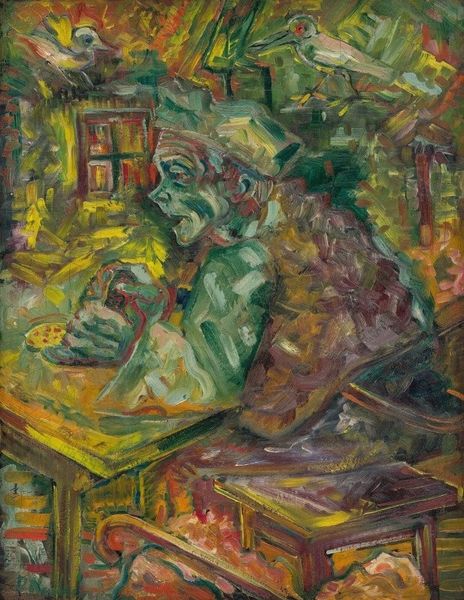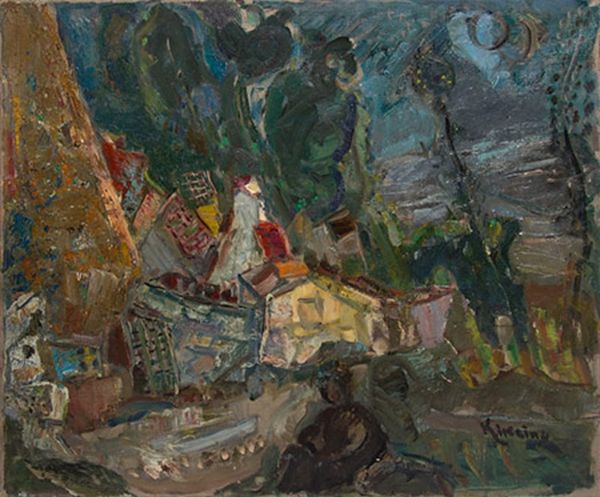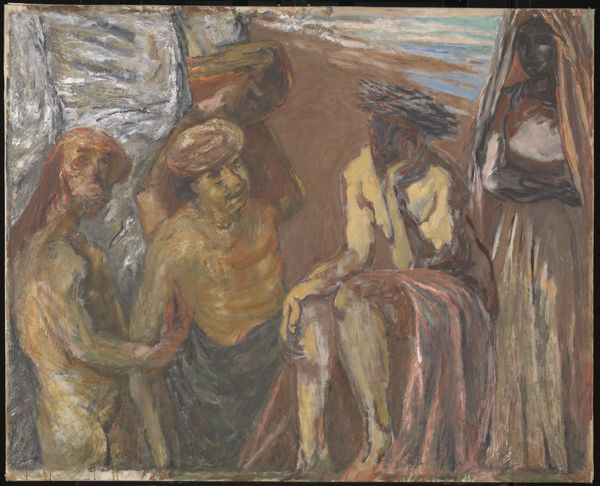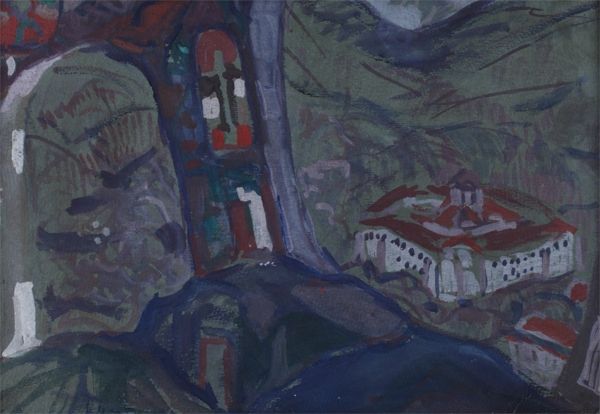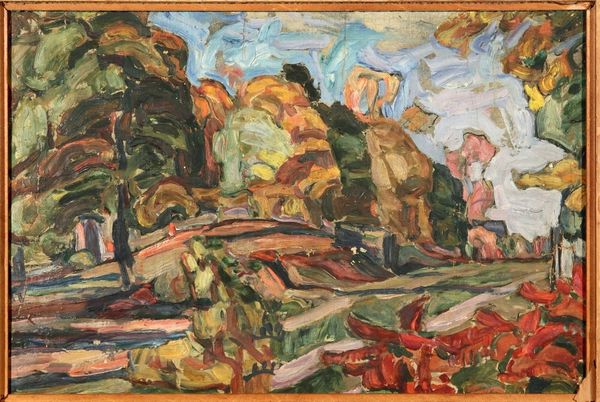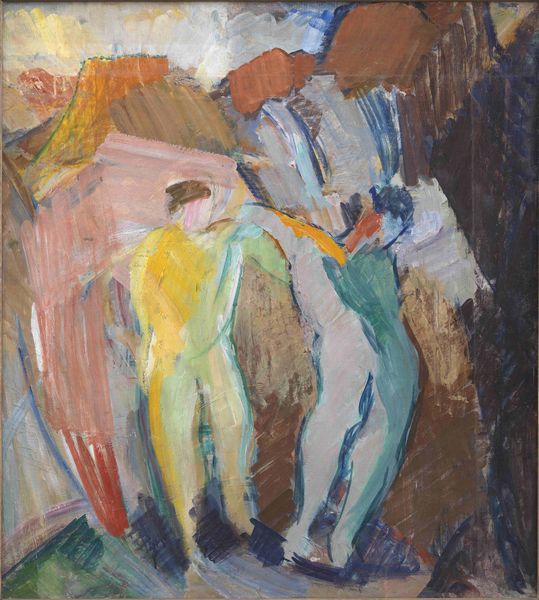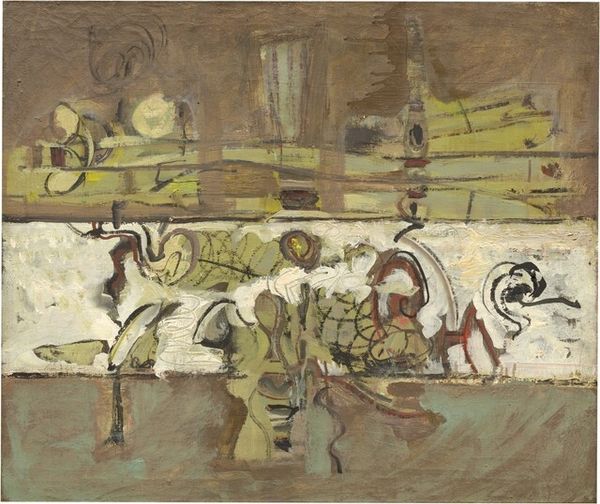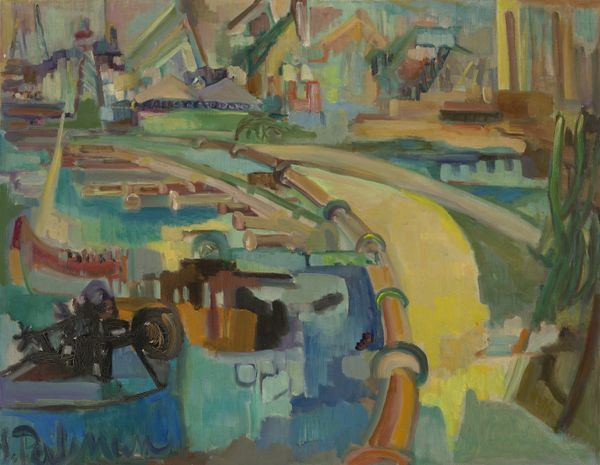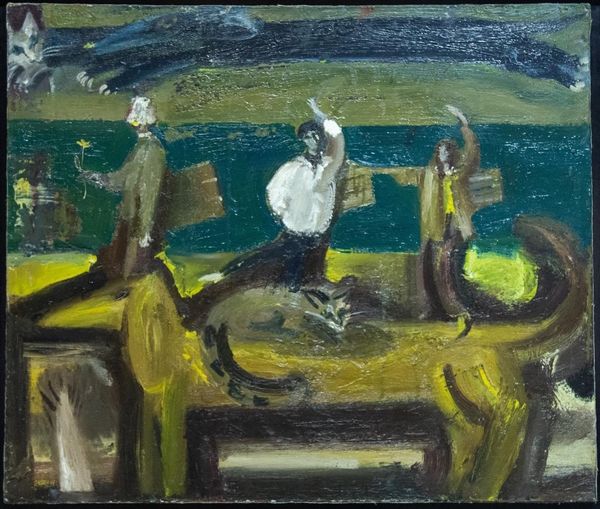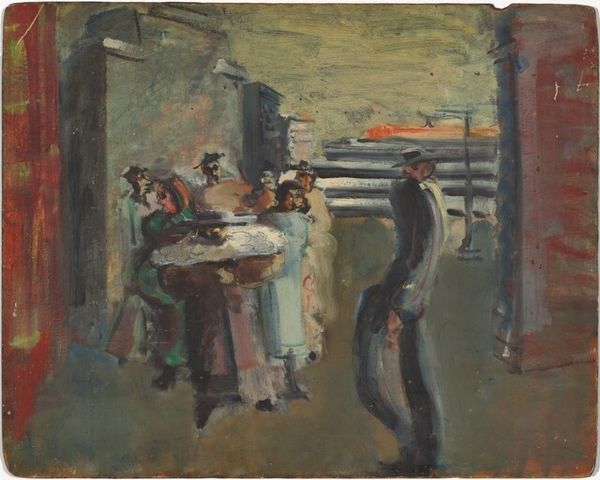
Dimensions: support: 947 x 760 mm
Copyright: © The estate of John Minton | CC-BY-NC-ND 4.0 DEED, Photo: Tate
Curator: John Minton's painting, "Children by the Sea", now in the Tate collection, presents a rather somber scene. Editor: I agree. The palette is muted, almost mournful. The figures' stylized forms evoke a sense of detachment. What can you tell me of its history? Curator: Minton, who lived from 1917 to 1957, was a leading figure in the Neo-Romantic movement in Britain. The war years had ended only a few years prior to its creation. Editor: Does this capture a nostalgic sentiment? A yearning for simpler times after immense societal upheaval? The children seem frozen, almost like monuments. Curator: Perhaps it also reflects the psychological toll of war on a generation, filtered through Minton's personal experiences. Editor: Indeed. The painting's surface reinforces this subdued reading; its textures and somber tonality enhance the sense of melancholy. Curator: Its formal qualities certainly amplify the emotional resonance. Editor: A captivating piece, rich with potential readings.
Comments
tate 7 months ago
⋮
http://www.tate.org.uk/art/artworks/minton-children-by-the-sea-t04887
Join the conversation
Join millions of artists and users on Artera today and experience the ultimate creative platform.
tate 7 months ago
⋮
Minton was invalided out of the army in 1943, and from then until autumn 1946 he shared a London studio with two other painters, Robert Colquhoun and Robert MacBryde. The Polish painter Jankel Adler also lived in the same house and he shared with the younger painters his knowledge of the European avant-garde, especially Picasso. The landscape in this painting is inspired by disused buildings seen near the sea at Marazion in Cornwall, but the children are probably invented figures. The subject of the painting may suggest an interest in child psychology and awakening sexuality, themes found in other work by Minton in the mid-1940s. Gallery label, September 2004
